Interview with Director Shinichiro Watanabe about the anime 'LAZARUS' - a confident work that asks the 'John Wick' director for the action and incorporates challenges such as a scriptwriting team system
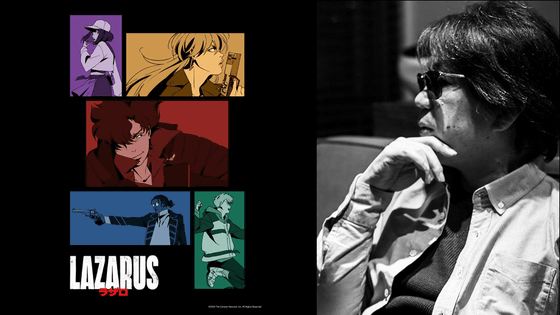
The original anime ' LAZARUSU ' will begin broadcasting and streaming on Sunday, April 6, 2025, as
Original anime 'LAZARUS' | Broadcast and streaming on TV Tokyo and other channels from Sunday, April 6, 2025!
https://lazarus.aniplex.co.jp/
'LAZARUS' Main PV | 'LAZARUS' Main Trailer - YouTube
GIGAZINE (hereinafter, G):
I've been watching Director Watanabe's work since 'Macross Plus' and 'Cowboy Bebop', and when I looked up past interviews to find out where he was from and what kind of person he was, I found a story about his hometown, Ayabe City, in a 2023 interview with Forbes . The editorial office is in Ibaraki City, Osaka Prefecture, and it's less than two hours by car to Ayabe City, but I've never been there. In this interview, the director described himself as 'like a wild child playing in the fields and mountains,' but what kind of days did he spend?
Director Shinichiro Watanabe (hereinafter, Watanabe):
There was a mountain right behind my house, and it was really the countryside. There wasn't even a bus route, and there wasn't a single store in the town. That was the environment I was in. There was television, of course, but there were no game consoles at the time, so I had no choice but to play outside. It was normal to play Tarzan using vines growing in the mountains, and the vines would break off and I would fall and get hurt. I tried climbing mountains, catching snakes with my bare hands, eating wild plants that grew around there... When I tell this story, people ask me, 'What era is this?' (laughs), but that was what the countryside was like back then.
G:
There was nothing else to do but play in the fields and mountains.
Watanabe:
' My Neighbor Totoro ' is written by someone who grew up in the city and longs for the countryside, but the people who actually lived there hated the countryside and came to the city, which is why they created the work set in the city.
G:
! So that's where it leads. I understand very well. The director has worked on many original works, including this one, 'LAZARUS'. When making an original work, I think you need an initial idea or inspiration, but in this case, where did the idea start?
Watanabe:
Of course, there is a theme at the beginning, and when Cartoon Network ordered this, the theme was 'SF action'. From there, I think about the content, but in the case of animation, the characters are as important as the story and world view. There is always a character image that I like, and I'm always thinking, 'I want to make this kind of guy the main character next time.' By thinking about it, I guess the image of the character gradually solidifies.
G:
That's right.
Watanabe:
I want the characters to look like real people, as if they are sitting there. It takes a long time to get to that point, but I think that's the only way to draw characters that have a sense of reality. Since anime is all fiction and drawn with pictures, it's easy to become a fantasy. To avoid that, I think about things like, 'What would this guy do in this situation?' or 'What kind of food does he like?' Most of it doesn't appear in the anime, but I have to think about it even when it doesn't appear. By the way, there is also a setting that doesn't appear at all in the work, that Axel loves bananas (laughs).
G:
There are even some details that don't appear (laughs).
Watanabe:
The difficult thing is that if he becomes just a real old man, he won't be attractive (laughs), so we have to make him attractive. There are many characters with eccentric character settings in anime, and those may have an impact or be unexpected, but for a series, I think it's important to watch the whole series and see if you can like him. Of course, the character's personality may be slightly modified when the story is created, but the core part doesn't change much. For example, Axel, who appears in 'LAZARUS', is a guy who likes parkour, and even though one wrong step could result in serious injury or death, he goes out of his way to do it. In other words, he likes the edge of danger. That doesn't mean he's a bad person, but he's an extremely friendly and easy-going guy. But when it comes to dangerous situations, he changes completely and goes out of his way to get into danger. That's the kind of character I gradually create.
Axel, the thrill-loving escape master, played by Miyano Mamoru
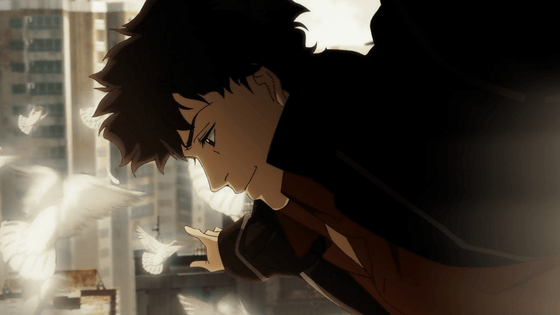
Doug, an intellectual, played by Shin Furukawa
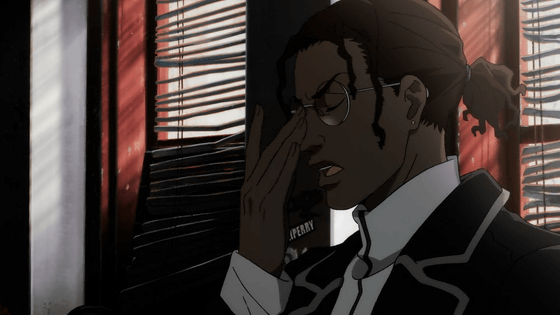
Leland, a drone pilot, is played by Yuuma Uchida.
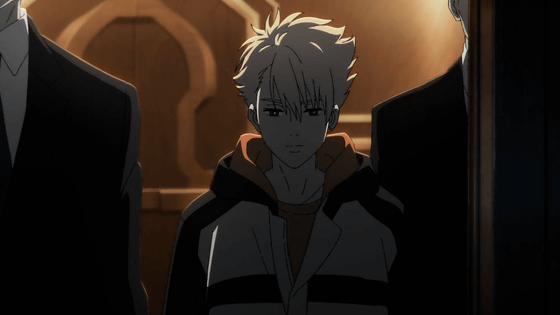
Hacker girl Elaina played by Manaka Iwami
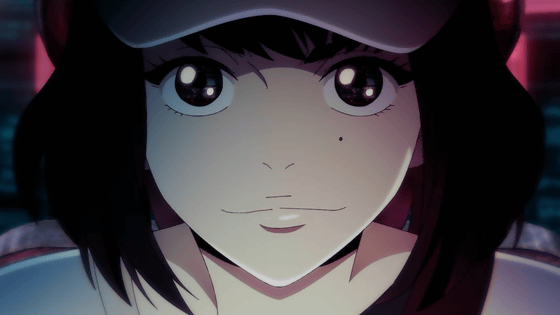
G:
Oh, so that's what it means.
Watanabe:
When it comes to the story, I think about it separately from the characters, and it all comes together somewhere to make a work. If it doesn't come together, it won't be a work (laughs).
G:
(lol)
Watanabe:
This time, the story is about a man who spreads a poison called 'Hapuna' disguised as a painkiller, and after spreading a complicated drug that no one can analyze throughout the world, he says, 'It was actually poison.' The story is about how to recover from a situation where the world is about to end. In other words, people all over the world are facing death. Also, when I was thinking about how to involve this character, a man who does not fear death and loves danger, I heard a song called 'Lazarus' by The Boo Radleys , which I have always liked, and I was inspired by it, thinking, 'Oh, this is a passage from the Bible,' and it became a work of art.
The Boo Radleys - Lazarus (Official Video) - YouTube
G:
So that's how it's made.
Watanabe:
When directing voice actors, we often give instructions like 'act natural' or 'speak like a normal person,' because we want the character to have a sense of reality, as if it really exists.
G:
When you create a story, do you start from the beginning and work your way through it, or do you decide the beginning and end first?
Watanabe:
When I write a story, I like to draw the beginning and the end. I can think of things like 'I want it to end like this' or 'I want to tell a story that starts like this' pretty quickly, so I rarely decide on the ending until the last minute. Even with 'LAZARUS,' the image of the beginning and the end came to me right away. The only difficult part is creating the space (laughs).
G:
I saw the first four episodes for this interview, but I still have no idea what's going to happen next...
Watanabe:
Is it like, 'Is it really going to end?' (laughs)
G:
I know this is not something I should say in front of the director, but I really am wondering what will happen.
Watanabe:
Episode 4 is still early on, so don't worry, it will end properly!
G:
I'm glad, it ends properly (laughs). Is this 'image of the end' something that you communicate to the staff and cast to some extent?
Watanabe:
I will never say that (laughs)
G:
(lol)
Watanabe:
To be honest, it's not that interesting. It's made with a feeling of 'It's supposed to be like this, right?'
G:
Ah, so that's what happens.
Watanabe:
After all, there's a difference between drawing the ending knowing it and drawing it without knowing it. The characters in the story live without knowing what their future holds. In particular, voice actors often ask me, 'What happens after this?' but I always play dumb and sometimes even lie. In 'LAZARUS,' there's a scene where Doug gets seriously injured, and I tell
G:
Terrible (lol)
Watanabe:
Then Furukawa-san would say, 'Eh... next week?' and quickly check the schedule (laughs). That's how we try not to tell people what's going to happen in the future. We live our lives not knowing what's going to happen in the future.
G:
I see.
Watanabe:
If I knew I was going to die here, I would want to act big, but that would be a problem.
Members of Team Lazarus. On the far left is Christine, a gun specialist played by Maaya Uchida.
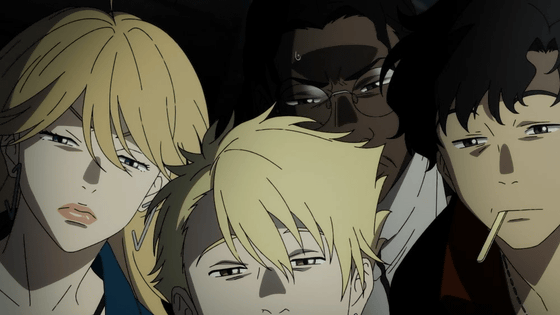
G:
By tightening up those parts, you can create a sense of reality. My next question is a bit off topic, but I heard that in the employment exam at Sunrise, you had to write about your favorite movie and the reason why. At the time, you thought the anime industry was a casual place, so you went in a T-shirt and jeans, but everyone was wearing suits, so what was your favorite movie?
Watanabe:
Apparently, he was criticized for not mentioning a Sunrise work even though it was a Sunrise test. I think the work was '
G:
I see.
Watanabe:
Actually, the first job interview I went to was with Sunrise and I passed, so I've only ever taken a job interview once. At the time, the person in charge of interviews at Sunrise said, 'This guy is awful. He's rude and there's nothing you can do about it,' but one of the interviewers, Director Ryosuke Takahashi , said, 'You're interesting, so let's hire you.'
G:
oh.
Watanabe:
Saying that I only had to take one entrance exam might give the wrong impression that I'm an excellent person, but that's not the case; it's just that there happened to be someone who found my work interesting.
G:
I see. Earlier, we talked about the sense of reality of the characters, but other things that appear in the work, such as cars, also seem to have a very real presence.
Watanabe:
Most of the cars are designed by Brune Stanislas. It's true that at the ordering stage I said 'I want something that has a sense of reality, a car that looks like it could actually be running,' but after that I let the designer do what he likes. However, sometimes I ask him to put in a car that I like (laughs). If I say that I like American cars from the 1940s and 1950s, I think you'll know which car I'm talking about (laughs). Also, as the story progresses, you'll find out that in places like futuristic cities, the cars are clean and futuristic, but when you go to developing countries, the cars are old-fashioned and very dirty. Showing such disparities even with just one car is something I was particular about.
G:
You have spoken about 'trying new things' in several interviews in the past. Please tell us about the new challenge you are taking on with 'LAZARUS.'
Watanabe:
There are many things, but first of all, it was a new attempt to ask the live-action team, Chad Stahelski, the director of ' John Wick ,' to choreograph the action scenes, and it was also the first attempt to have a script written by a team. In the United States, there is a system called a writer's room, where multiple people share ideas, and this time we have a system similar to that.
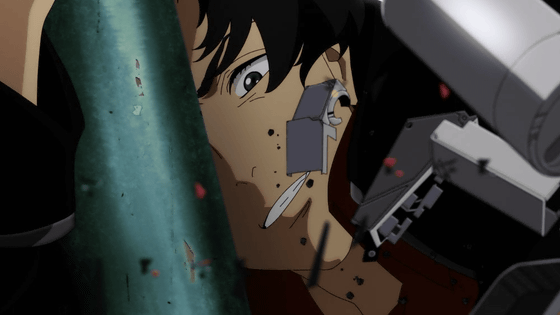
Watanabe:
Also, to achieve three-dimensional camerawork, I used software called
G:
There are so many new things.
Watanabe:
For the action scenes, we had not only Chad but also an animator who is particular about action work on it from the action design stage. We also asked a Hollywood team to do the sound effects. At first glance, it may seem normal, but we actually did a lot of new things. I think we made a great film this time, so please check it out!
'LAZARUS' Axel Action Movie | 'LAZARUS' Axel Action Trailer - YouTube
G:
thank you very much.
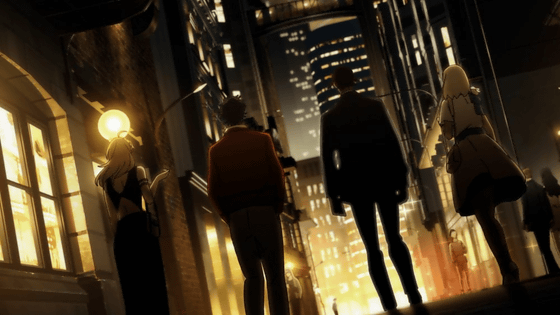
The anime 'LAZARUS' will be broadcast on TV Tokyo's six affiliated stations from 11:45 PM on Sunday, April 6, 2025. It will also start broadcasting on CS Animax from 10 PM on Saturday, May 10.
In addition, it is available for the fastest streaming on U-NEXT, DMM TV, and Animehodai from 24:15 on Sundays immediately after the terrestrial broadcast, and is also available every Wednesday from 12:00 on d Anime Store, d Anime Store Niconico Branch, d Anime Store for Prime Video, ABEMA, Bandai Channel, Hulu, FOD, Lemino, Netflix, Prime Video, Disney Plus, WOWOW On Demand, Niconico Channel, Niconico Live Broadcasting, TELASA (unlimited viewing plan), J:COM STREAM (unlimited viewing), milplus unlimited viewing pack prime, and more.
The second episode will be available for free on ABEMA from 9:30 p.m. today, April 16th (Wednesday), and on Niconico Live Broadcasting from 11:30 p.m., so you can still catch up.
LAZARUS #1 [Latest Episode] | New Future TV | ABEMA
https://abema.tv/channels/abema-anime/slots/AUGD8gaiWatAfy
LAZARUS Episode 2 Screening - Wednesday, April 16, 2025, 23:30 start - Niconico Live Broadcast
Episode 1 is here.
LAZARUS Episode 1 'GOODBYE CRUEL WORLD' - Niconico Video
© 2024 The Cartoon Network, Inc. All Rights Reserved
Related Posts:







